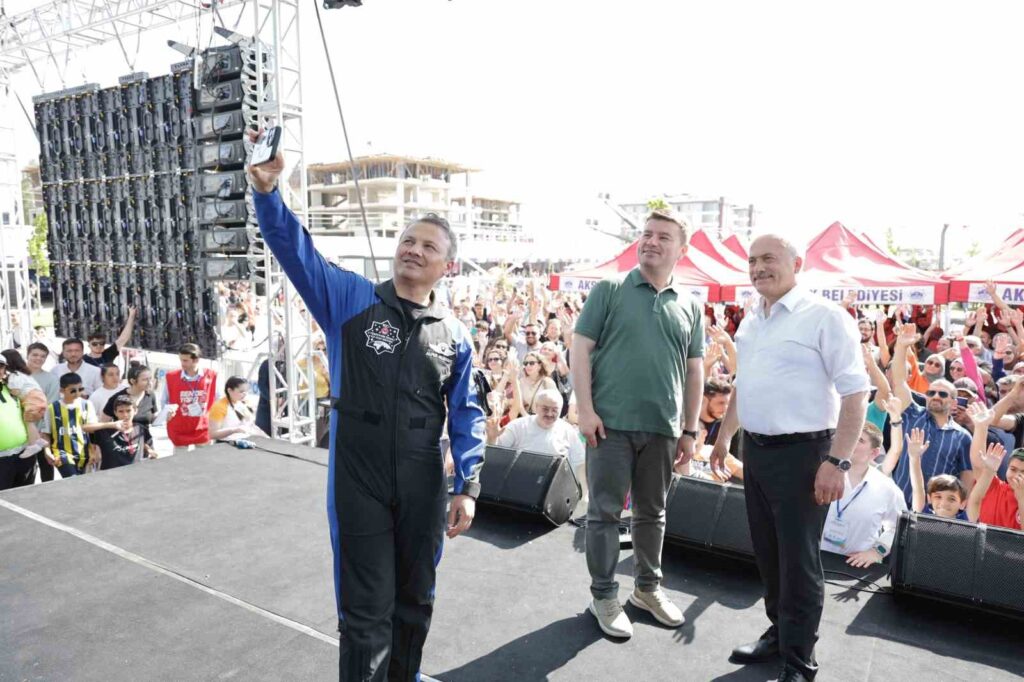The 5th ignition process of Türksat 6A has been completed.
Türksat 6A successfully completed its 5th and final ignition during its orbital journey. Minister of Industry and Technology, Mehmet Kacır, stated in his speech at the Türksat 6A 5th Ignition Program organized at TÜBİTAK Space, Turkey’s National Technology Initiative…
The 5th and final ignition of Türksat 6A’s orbit journey has been successfully completed. Minister of Industry and Technology Mehmet Kacır, in his speech at the Türksat 6A 5th Ignition Program held at TÜBİTAK Space, noted that the engineers and researchers have successfully completed a crucial stage in the Türksat 6A Project, one of the most important projects of the National Space Program in Turkey’s National Technology Move journey with the mind and sweat of the engineers and researchers here. Thanking the researchers, engineers, and all employees of Türksat, TÜBİTAK, TUSAŞ, ASELSAN, and C-Tech who have been contributing to this project for years, Kacır recalled that plans to develop Turkey’s own satellites started in those years. He stated that ‘Unfortunately, the 80s and 90s were years in Turkey where political and economic instabilities occurred periodically and ultimately Turkey could not achieve global success in the space race. Until the 2000s. After the 2000s, under the leadership of our President, Turkey has implemented numerous successful projects one after the other in order to become a country that can develop, produce, and benefit from its own satellites. With projects like BİLSAT, RASAT, GÖKTÜRK, and last year’s high-resolution imaging satellite IMECE that we sent into space, we have achieved tremendous domestic capabilities, especially in imaging satellites.’ He said that ‘We have now gained access to the geographies where approximately 5 billion people live in the world.’ Kacır expressed that developing communication satellites is a more ambitious and advanced goal compared to imaging satellites. Emphasizing that Turkey, which used to procure communication satellites from abroad, developed its first communication satellite Türksat 6A with its own teams, designs, and eventually launched it, Kacır made the following evaluation: ‘Türksat 6A is the highest value technology platform that Turkey has produced to date. With Türksat 6A, Turkey has become one of the 11 countries that can produce its own communication satellite. During the development process of Türksat 6A, we produced 84 different types of equipment domestically. We successfully completed 396 environmental and functional tests in our own facility at the TUSAŞ Campus USET Center. Eventually, we achieved an over 80% domesticity rate in Türksat 6A. With the inclusion of Türksat 6A, Türksat communication satellites can now reach the geographies where approximately 5 billion people live in the world. Especially with Türksat 6A, countries like India, Indonesia, Malaysia, and Thailand have become part of the coverage area of Türksat communication satellites. Perhaps one of the most important firsts we experienced with Türksat 6A was the capability of performing orbit transfers with our own teams. Because this competency has brought us an important capability that we will utilize in the new satellite and space systems and projects that Turkey will develop in the coming years.’ Reminding that they sent Türksat 6A into space on July 9, Kacır said, ‘Our teams received the first signal from the satellite in the 67th minute of the launch. Approximately an hour after the first signal, our teams sent the first command to the satellite. Then, with a command sent again by our teams, we performed the opening of the solar panels, which we consider as an important stage.’ Kacır emphasized that they transferred the satellite from the elliptical orbit between 300 kilometers and 70,000 kilometers, where the satellite was moving after separating from the rocket, to the final mission orbit of 35,786 kilometers step by step on July 10-12-14 and 16 by performing four different ignitions. He made the following assessment: ‘We witnessed the final ignition of the transfer operations. With a 5-minute 22-second ignition, Türksat 6A finally settled in the circular orbit at an altitude of 35,786 kilometers. Now, Türksat 6A will complete its tests at an orbit of approximately 50 degrees in the coming months and then transfer to the final mission orbit of 42 degrees to operate for at least 15 years and will be handed over to Türksat by our teams.’ Expressing that in the coming years, they will carry these capabilities to much more advanced levels through new satellite projects and with the help of teams with the Lunar Mission, which is one of the most important stages of the National Space Program, Kacır stated that they will continue to implement many projects to engrave Turkey’s name in space under the leadership of President Recep Tayyip Erdoğan and to make Turkey one of the leading countries in space technologies. He continued his words as follows: ‘I thank President Erdoğan, Minister of Transport and Infrastructure Abdulkadir Uraloğlu for supporting our Türksat 6A Project and all National Technology Move Program and projects in the strongest way, TÜBİTAK Space for their adoption and support to the Türksat 6A Project, TUSAŞ, ASELSAN, CTech teams, and of course Türksat teams who will use the satellite for their diligent work throughout the whole process. May Türksat 6A bring goodness and good luck to the Turkish nation.’







